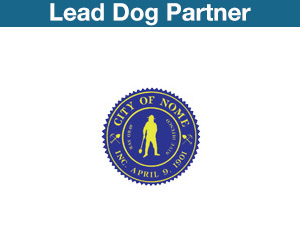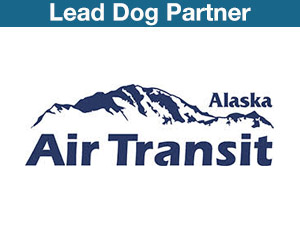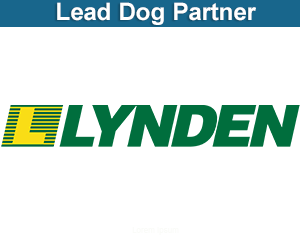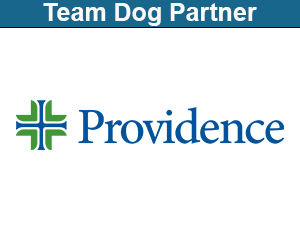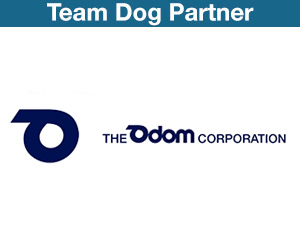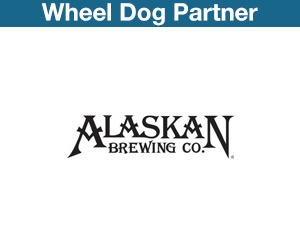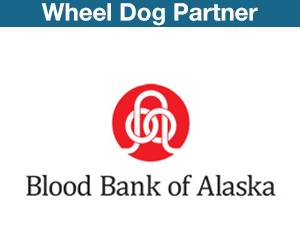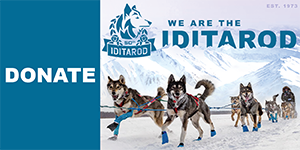Read this piece by Mike Kinville of Alaska, written for and published in the Fairbanks Daily News-Miner newspaper. Posted here by permission of the author.
Anti-mushing Group Paints Unfair Portrait of the Iditarod
Posted: Tuesday, March 4, 2014 12:00 am
By Mike Kinville
Sled dog mushing as a sport and a recreational activity owes a great deal to the Iditarod. Every aspect of the art and science of sled dog racing has been honed by years of intense competition in this race. Dog harnesses and sleds, training methods and routines, diet and exercise, veterinary care and breeding strategies have all evolved at an unprecedented pace when considering the fact that the partnership between man and sled dog dates back at least 4,000 years.
The Iditarod has evolved as well. Recognizing that preserving the health of the dogs is critical to the sport, the Iditarod’s leadership has sought to provide open access to its athletes, and the veterinary community has responded. These sled dogs are unique in what they do and how they do it, and clinical study after clinical study has been undertaken to advance the science of canine care.
This openness has provided a pathway for animal rights activists. Marjorie Glickman, of Miami, Fla., visited a dog kennel in Alaska and decided to devote her life to ending the Iditarod — and perhaps all dog mushing in Alaska. She founded the Sled Dog Action Coalition (SDAC). Study of this entity, with Ms. Glickman as director, leads to little information aside from the fact that it is based in Miami. No board of directors or staff is noted, nonprofit tax filings are not to be found.
Whether this is an actual organization or merely Ms. Glickman, no national media attention on the Iditarod is safe from comment by the SDAC. If a small-town newspaper in Idaho highlights the adventures of a local musher competing in the Iditarod, the SDAC will most likely cut-and-paste tales of woe into the online comment section and direct readers to the SDAC’s website. And what a website it is.
The SDAC website inundates its visitors with more than 871 bulleted comments designed to create the impression that the Iditarod overflows with inhumane mushers who beat, kick, bite and even eat their dogs. Any aberrant behavior seen in the race’s history is projected onto every current musher. Medical studies that conclude that disease or injury “may” be attributable to the race are headlined stating that the condition “is” attributable to the race. Quotes are taken out of context to further the goal of ending the sport of sled dog racing. Practices of 40 years ago are presented as if they still occur. Even the experiences of mushers not participating in the Iditarod are presented over and over again as if they apply.
What is clearly missing from the SDAC website is perspective. There have been 41,296 individual starts by sled dogs; 852 mushers have completed the Iditarod. Even the sensitive subject of dog deaths needs to be considered against the historical density of sled dogs that have run this race. For illustration, if we assume that all of these dogs average 10 days on the trail, they have spent almost 12 million hours racing. This is hardly scientific, but perhaps it adds context to the claims made by the SDAC.
Ms. Glickman and the Sled Dog Action Coalition wish to end the Iditarod. They actively target sponsors and gleefully report every sponsor who buckles under activist pressure. It is a sad irony that they seek to end the best avenue for continuing to improve the lives of sled dogs. Poor dog yard conditions, the rejection of aberrant behavior and deliberate cruelty will best be addressed by a healthy and responsive Iditarod.
Veterinarian Emi Berger was a volunteer veterinarian and was interviewed by Randi Weiner of The Journal News on March 31, 2011. Ms. Glickman picked 13 words out of a 932-word article. Under the headline “Stomach ulcers are common,” Dr. Berger is quoted; “This year, the most common thing I saw was pneumonia and stomach ulcers.”
I will offer a few more words from Dr. Berger’s interview; “The … questions I get asked all the time are ‘Is it cruel?’ and ‘Are they cold?’ ‘Do they like it?’ When that dog is dropped off, they’ll howl. They want to be out (running). That’s all they want,” she said. “It’s like a Labrador wanting to play ball. It’s the ultimate fun thing for them to do.”
Perhaps Marjorie Glickman missed that quote?
Mike Kinville was born in Sitka, spent 24 years in the Alaska Army National Guard and retired in 2007. He works on Fort Wainwright as a contracted supply technician.







